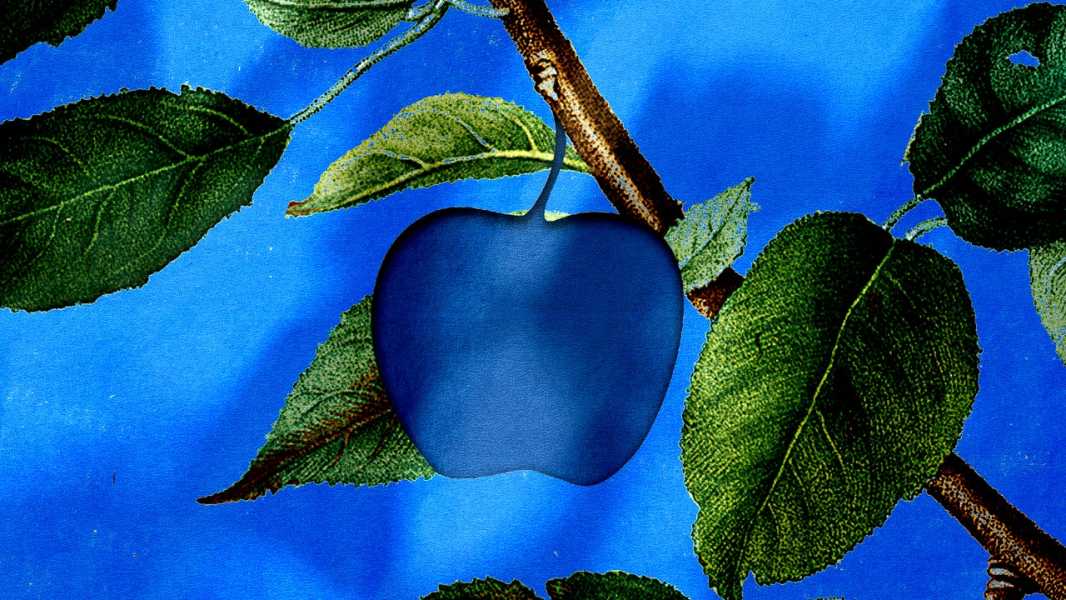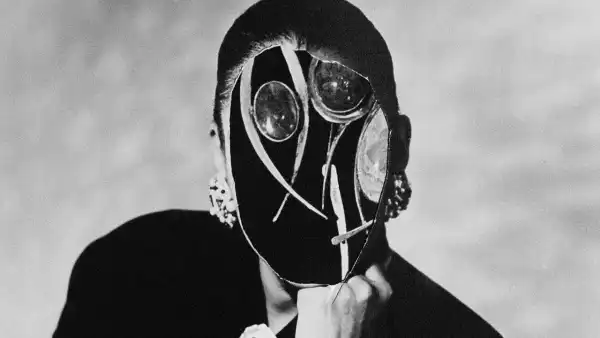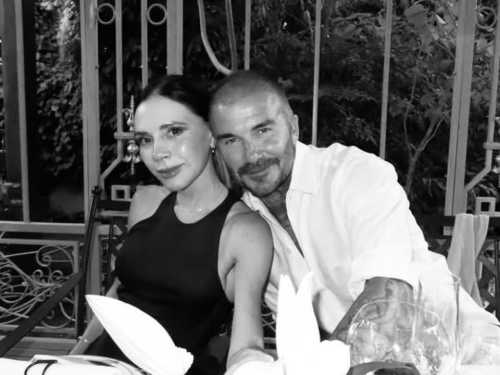
Save this storySave this storySave this storySave this story
Every autumn, I begin to crave generic seasonal comforts: the hues of turning leaves, the chill of sweater weather. I’m not really a pumpkin-spice person, but I’m a sucker for a classic u-pick apple orchard. In California, where I live, the weather in autumn is often more like summer, and seasonal discomforts include heat waves and wildfires. But apples remain one of the harbingers of the changing seasons.
I live in what is called wine country, but it used to be known as apple country. From the time it was colonized in the early nineteenth century and through the mid-twentieth century, Sonoma County’s agricultural industry centered on growing and processing apples, especially in the western reaches near the Russian River, where the early-season variety Gravenstein tends to thrive. Most of the fields here are now populated by high-end grape vines, but a few small apple growers persist, thanks in part to a recent resurgence in the popularity of hard cider. Recently I drove to the river with my partner and some friends, for a late-summer swim. The region was experiencing another heat dome. The two-lane highway lay alongside a few miles of old orchards, the trees’ lateral branches leaning on propped-up sticks, heavy with fruit. In the car, I passed around a plastic bag full of sliced apples. In the back seat, my friends crunched their slices and one of them asked, casually, “Are these from your garden?”
It was not an unreasonable question—I have a garden, it contains six apple trees, and apple season was approaching. But it filled me with shame. I demurred. “No, not yet,” I said. Not ever, I said to myself. My apple trees, to my great shame, have never flowered, which means they have never made fruit. And it’s probably my fault.
Lately, reminders of my horticultural failures are ever present. All summer long my social-media feeds were flush with triumphant garden photos: boastful shots of a hand holding five cherry tomatoes or a few green beans, and a caption proclaiming something like “today’s harvest!” or “our first crop of the year!” This strikes me as a bit precious; I’m generally not a proponent of pretending one’s hobby is a means of survival, or anything but what it is: leisure, with snacks. Still, I engage in plenty of my own online garden braggadocio, posting daily closeups of the roses and other perennial flowers I grow in my back yard. I keep the unproductive apple trees off my grid. I wouldn’t want to sully the mood.
The big secret of Western gardening is that it’s easy to grow things here. My garden is on a fearsome north-facing hill, surrounded by tall trees (the tallest—redwoods), but the back yard gets sun. It’s a cottage-style garden, which is to say that it’s motley and crowded. There are a few dozen rose bushes, various other perennial flowers, and a brace of fruit trees: the six apples, two plums (Santa Rosa and European prune), a persimmon (Hachiya), and a multi-graft Asian pear whose branches the local raccoons keep breaking in their nightly revelry. Living in the woods as I do, the border between the cultivated areas and the rest of the forest understory is porous. My garden is home to many birds, bugs, rodents, and other forest critters. In the giant redwood and oak trees that surround it, a family of acorn woodpeckers make their nests. Their red plumage looks like little fascinator hats, and their calls sound like a cackle. When I do my dawn patrol of the beds each morning, I imagine they’re laughing at me and my barren apple trees. I’ve made this garden a major part of my life, my personality, and my career. I even cast the apple trees as major characters in my memoir. And yet the fruits do not fall.
My dad, who is an actual fruit-tree expert, has a favorite gardening aphorism: “The best time to plant a fruit tree is twenty years ago.” I was late, but willing to wait. In 2017, the year my partner and I moved into our house, we planted bare-root trees, a handful of heirloom varietals that my father recommended for growing good cider apples. Bare-root fruit trees are paltry twiglike things, but with agreeable circumstances they should begin to fruit in about two to five years. By year five—springtime, 2022—I had high hopes that delicate blossoms would appear on the trees’ branches. Bud count: zero. The sixth year, 2023, I declared that I was patient, that the trees could take their time, no worries. But by year seven, I expected bounty. This was the year—it had to be the year. The apple trees leafed out green, then greener. Then they stayed disappointingly leafy; no flush of pink and white blossom followed the first tentative shoots. The trees did not flower, which meant they would not bear fruit.
When I finally admitted to my dad that my trees didn’t have any apples, he said what he usually does when I unload my garden anxiety on him: “Eh, I’m not worried.” It was a bad year for apples all over this region, he said, continuing to peruse the sports pages.
“No,” I emphasized. “Not just this year. They have never had fruit. They don’t flower! At all!”
He put down the paper. “O.K.,” he said, “Now I’m a little worried.”
Fruit production is an indicator of how a tree distributes its resources. If the trees aren’t anomalous late bloomers and are otherwise healthy, my dad posited, something must be causing them to invest all their hard-won nutrients into branches and leaves instead of flowers and fruit. It could be a lack of sun, or excessive cold in springtime, or not enough cold during the winter, he speculated. But, I replied, hoping the envy didn’t show in my tone, tons of my neighbors have fruitful apple trees, which means it’s not about the weather—right? He gave the perennial advice that no nervous gardener wants to hear: wait and see what happens next year.
Impatient, I consulted my other favorite gardening resource, the Web sites of a great many university-extension agriculture programs, the research and public-education arms of American land-grant universities. (The ways in which the government appropriated the land for these universities, beginning in the late eighteen-hundreds, are far from admirable, but the gardening advice holds up.) According to the University of Massachusetts and the University of Pennsylvania, overfertilization is the most common cause of unfruitfulness—an unlikely explanation in my case, since I have a light hand with fertilizers. Another possible culprit was pruning, the chore that in many ways defined my relationship to the garden.
Winter pruning is a deceptively simple concept: while an apple tree is dormant, a gardener prunes her trees by cutting off, or heading, some of a branch’s recent growth. If all goes well, this injury, paradoxically, will stimulate it to grow further. But cut too much, and it’s possible the tree might send too many of its resources into survival mode, forgoing flowers. The horticulturalist Liberty Hyde Bailey devotes a significant portion of his 1916 book, “The Pruning Manual,” to discussing the grievous woes that might arise from applying blade to tree.
I used to be afraid of pruning. That changed when, soon after we planted the apple trees, I developed chronic pain, the result of a medical accident that upended my life for several years. My garden became a site of recuperation, and in my own wounded state I became captivated by the idea that injury can, ultimately, encourage an organism to thrive. I was not alone in projecting big feelings onto my garden. Bailey believed that pruning, specifically, can “bring the person into closest contact and sympathy with the plant.” I found that the task embodied the perpetual frisson between care, influence, and control that so often defines our relationships with nature—the ways in which gardening can be, as Jamaica Kincaid says, “a conversation.” After I figured that out, I pruned with enthusiasm. Perhaps too much of it.
If gardening is about relationships between people and nature, it can sometimes mirror a classic of the genre: resource extraction, or at least resource manipulation. It can be too easy to slip into a quid-pro-quo attitude about gardening: I do something, I get something. I invest in the plants the minimal resources they need to grow; they provide me with beauty, diversion, and infinite opportunities to overthink it. (Also, snacks.) But my evolving relationship with the apple trees makes it clear to me that there’s a different way. Must even our pleasure gardens be subject to the human fetish for more? The natural world shouldn’t need to be productive in order to earn our care.
This season, I’ve been trying to spend less time tormenting myself with Instagram envy-bait and more time enjoying the garden itself. One recent evening, I walked through the beds, rogue blackberry shoots scratching my bare ankles, and I tried to cultivate an appreciation for the apple trees in their green, barren state. There is a beguiling rebelliousness to an unproductive fruit tree. They’re beautiful, with trunks about the diameter of my biceps, and they shimmy defiantly in the devilish autumn wind. Although they’re supposed to be dwarf varietals, they are twice as tall as me, a reminder that, despite all our human failures, plants are predisposed to growing—they just don’t always grow the way we want them to. These trees are not beholden to me, or to utility. They use their resources however they want.
Perhaps this is what a garden is for: to remind me that, sometimes, I suck at it. With the exception of a few chaotic minutes each week spent on Duolingo or trying out that new Pilates class, adults spend most of our time doing things we’re already good at. Every hour spent in the garden, on the other hand, is awash in the unknowable. If my garden could talk, it would look at my social-media feeds and laugh; it would then remove from my online shopping cart all the overpriced autumnal harvest accessories—the gingham-patterned clogs and reclaimed-wood harvest baskets—and say, gently, firmly: not today, Etsy. My dad’s mentor, the mercurial English horticulturalist and Shakespearean actor Alan Chadwick, believed that “the whole miracle of the garden is made up of secrets.” Why shouldn’t a garden have the right to retain an air of mystery, when the rest of our culture thrives on overexposure?
Soon the apple trees will go quiet, drop their leaves, and enter a state of deep rest. This winter, I’ll try to prune more gently, and I’ll probably fail. Perhaps the trees will begin to move incrementally back toward pre-human growth patterns. Maybe, decades from now, the next human occupant of this land will give up on them entirely and “prune them with a spade,” as my dad likes to say. Until then, I’ll stand expectantly under the Belle de Boskoop, which by this time of year should be dropping dozens of big, russeted apples on the ground. It has vigorous, almost uncontrollable branches, and we’ve pruned it hard every year in an attempt at sculpting its form. But it reaches ever upward, each lateral proudly unburdened by fruit. If it never crops, it’ll still be here: the Bartleby of my garden, quietly, stubbornly, declining participation in the grind. If it does eventually bear apples, I’ll prep the hand-crank cider mill, preferably while wearing those gingham accessories. The woodpeckers will have new reasons to laugh at me. ♦
Sourse: newyorker.com






